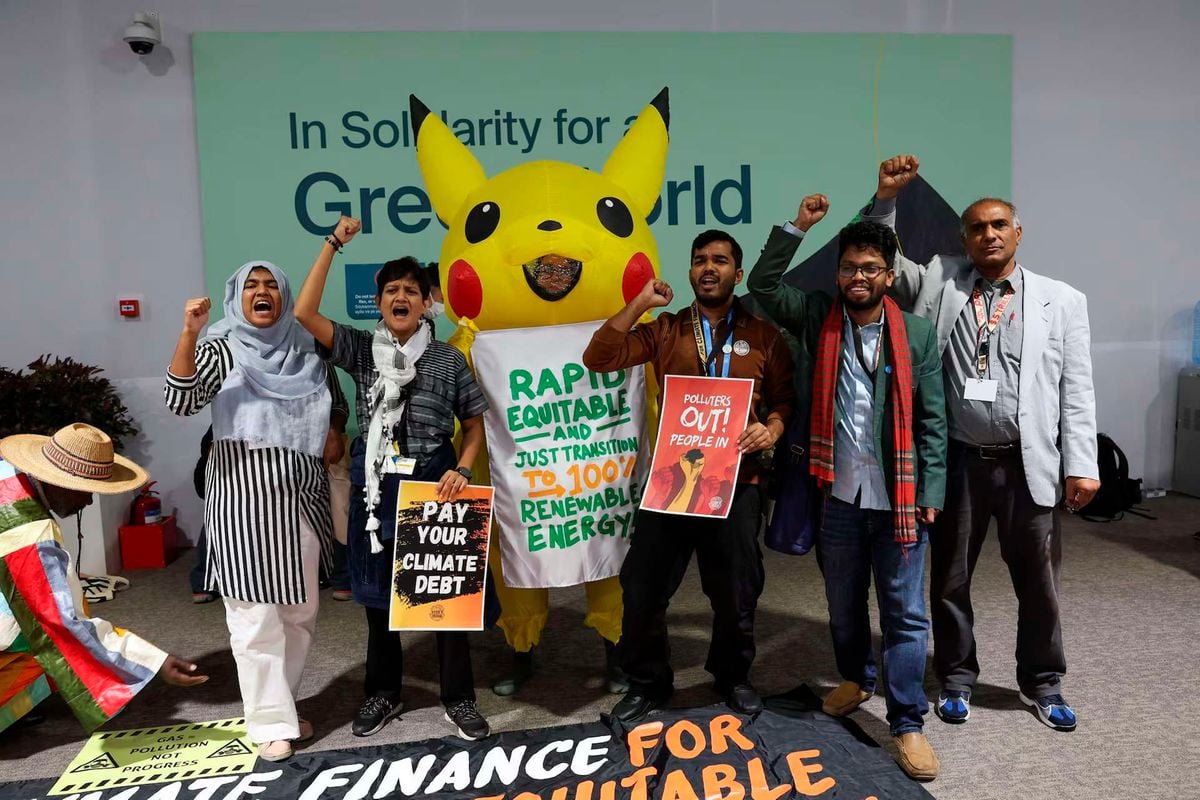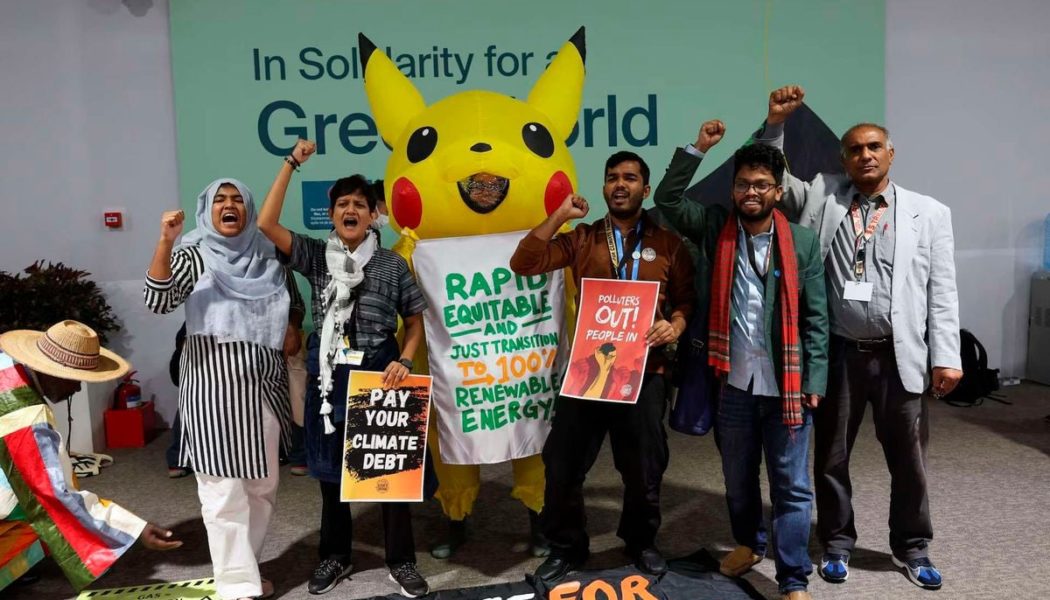
For several days in Baku, the air has been charged with one overarching concern: financing the planet’s future. As the clock ticks towards the November 22 close of the annual world’s largest climate summit, it’s clear that the story of COP29 will be written in dollars and cents—or the lack thereof.
In Baku’s Olympic Stadium, where COP is happening, the air is thick with tension. Conversations about money—often emotional, sometimes contentious, and invariably prolonged—dominate the scene. Dubbed the “Finance COP,” this summit has lived up to its name, with finance taking centre stage in every debate, discussion, and deal-making attempt.
The roots of this heated debate over climate finance stretch back to 1992, when nations were divided into two categories: developing and developed. That divide established the foundation for ongoing disagreements about financial responsibility in the fight against climate change.
Fast forward to 2009, at COP15 in Copenhagen, where this conversation took on a sharper focus. Developed countries made a groundbreaking pledge: to mobilise $100 billion annually by 2020 to support developing nations to tackle the climate crisis. It was an ambitious promise—and one that would later ignite frustration and mistrust as delays and unmet targets piled up.
Some claim that the target was met, while others say developed nations fall short of the promised $1 trillion by 2020. The Organisation for Economic Cooperation and Development (OECD) says the goal was met in 2022, two years after the deadline.
In 2015, countries signed the Paris Agreement, an ambitious goal to keep the global temperature well below two degrees Celsius. It was during those pivotal discussions that representatives from various blocs—known as “negotiators” in the language of climate diplomacy—agreed on a bold step forward: to establish an even more ambitious goal for climate finance, one that would reflect the growing urgency of the crisis.
The new collective quantified goal on climate finance (NCQG) would replace the existing target of $100 billion. Representatives from developing countries say this figure represents the reality of the climate crisis in their countries.
The NCQG is meant to be adopted at this conference. It is no wonder, for emphasis, it is a finance COP.
“This agreed financial commitment should address the adaptation, loss and damage, and mitigation needs of developing countries, including just transitions,” said Ali Mohamed, who chairs the African Group of Negotiators (AGN). Other leaders have said the finance would propel their national climate plans (NDCs), which are due early next year.
However, as of now, there is no agreement on this. The negotiators are still holed up in meetings, scrutinising a new text on the third day of COP. It was expected that a new finance text would come out last Thursday, but it had not materialised by the end of the week.
Here are the elements that the negotiators are grappling with:
Three pillars of climate action
The $100 billion that developed countries committed to developing countries covers mitigation and adaptation, which encompass the reduction of greenhouse gases and building resilience to climate impacts.
However, negotiators from the Global South want loss and damage covered under the new finance goal, arguing that disasters, often beyond what communities can adapt or prevent, are already happening. However, representatives of the developed nations argue that the support towards this particular pillar is voluntary and already covered in a different part of the COP process.
Setting a target to meet climate needs of developing countries
According to developing countries, the $100 billion was a political statement not backed by any specific data. The parties have agreed that the new goal should consider their needs and priorities in fighting against the climate crisis.
The bone of contention is what this will look like. Cumulative estimates, capturing the national and international financial sources, have put this figure to at least $1 trillion a year by 2030. While part of this amount would come from public finance, developed countries are leaning towards mobilising the funds through the private sector.
“It shifts the burden onto developing nations that cannot turn a profit from these adaptation needs,” said Mariana Paoli, Global advocacy lead at Christian Aid.
Determining countries to contribute to the new target and those to receive the funds
The question of who to contribute and benefit from the NCQG if agreed upon is one that negotiators are still deliberating about.
Many developing countries, on the one hand, argue that those who should pay up are already agreed upon under the United Nations Framework Convention on Climate Change. On the other hand, developed countries posit that the world has changed a lot over the last three decades and there should be new indicators to assess who should contribute.
On who should receive the funding, there are quarters saying the support should be tailored to support the most vulnerable countries to climate impacts, a move that developing countries are against and argue that all countries should have a place at the table.
Implementation of transparent processes
For developing countries, one of the key asks for the new goal is that it should offer clarity on financial flows in a manner that is traceable to the last dollar.
The parties agree that the existing system be used to monitor flows into the goal and the Standing Committee on Finance to develop progress, just like it did with the $100 billion. Developing countries, however, request additional clarity on what can be reported as climate finance in the NCQG.
Designing NCQG to support high-quality climate finance
Beyond the headline figure, the quality of climate finance is crucial for effective implementation.
Developing countries have raised concerns about existing funding mechanisms being overly complex, slow, and inaccessible. The key aspects of high-quality climate finance include accessibility, predictability, effectiveness and concessional finance.
Defining scope and relationship to broader financial goals
Another contentious issue is how the NCQG aligns with Article 2.1c of the Paris Agreement, which calls for aligning all financial flows with low-carbon and climate-resilient development. While countries agree that NCQG will aim to contribute to the achievement of Article 2.1(c) in some way.
There is still no clarity on how it will do that. Article 9 of the Paris Agreement emphasises that developed nations hold the primary responsibility for providing financial support to developing countries to address climate change. However, Article 2.1(c) expands this vision, calling on all nations to align financial flows—both public and private—with pathways towards low-carbon and climate-resilient development.
This dual mandate creates a complex dynamic for the NCQG. While the NCQG will focus on direct funding commitments primarily from developed nations, there is increasing pressure to incorporate the broader goal of aligning global financial systems with climate goals. Developed countries argue that this broader alignment requires engagement from all nations, including developing countries.
However, developing nations contend that this responsibility lies outside the scope of NCQG talks and should be addressed separately.
Choosing a time frame
A critical aspect of the NCQG is deciding the time frame when developed countries must meet their commitments.
This decision will not only influence the size of the financial target but also determine how progress is monitored and adjusted over time.
Proposed time frames range from short five-year cycles to longer horizons of 10 or even 20 years, each with distinct advantages and challenges.
For instance, a five-year time frame could align closely with existing climate mechanisms under the Paris Agreement, such as the NDCs and the Global Stocktake (GST).
Both of these operate on five-year cycles, making it easier to synchronise financial commitments with countries’ evolving climate plans and progress assessments.
Proposals for 10- or 20-year horizons aim to provide more stability and predictability for financial planning, giving developed countries a clearer long-term target and allowing developing nations to align their climate strategies with reliable funding expectations.









